Giuseppe Verdi (1813 - 1901)
“He went a little further, and saw a vast stretch of land, almost wild. That’s the place! he said to himself. He bought it and began by building a villa. Then he added a garden to the villa, a park to the garden, meadows to the park, woods to the meadows; and over the whole estate he dotted fine, beautiful farms — as many as the operas he composed!”(1)
Verdi loved the countryside of his childhood and returned as an adult to secure a home for himself. He bought a rundown house and hired local people to help him remodel the house and create an oasis around it. “I do all my writing in the country; somehow there everything comes at once, quite without effort, and I am more contented,”(2) he said.
Verdi first learned music from the village organist, Pietro Baistrocchi, whose job he inherited as a teenager when Baistrocchi died. At 13, he began to compose music for church, theater, and the concert hall. In 1832, at the age of 18, Verdi left home for Milan to study counterpoint. His teacher, Vincenzo Lavigna, urged him to attend rehearsals of Haydn’s The Creation. When all three of the concertmasters fell sick at once, Verdi, who had been sitting quietly in a corner for weeks, went to the piano and conducted the rehearsal. He did so well that he was hired to conduct the concert itself.
In 1836, Verdi became maestro di cappella at Busseto and married his student, Margherita Barezzi. Their two children died in 1838 and 1839. The devastated couple moved to Milan for the production of Verdi’s first opera, Oberto, Conte di San Bonifacio, which garnered a contract for three more operas. Tragically, in 1840, his beloved Margherita died. Verdi was overcome with grief and could not work. “I was convinced that I could find no consolation in my art and decided never to compose again,”(3) he wrote.
Then a libretto, pressed upon him by a friend, awakened his creative spark. [See the article “Lionized Italian Patriot,” included in this program.] After the premiere of Nabucco in 1842, Verdi would spend the next 60 years in the public eye as Italy’s most lauded and revered composer. He also befriended his later life-partner, Giuseppina Strepponi, the soprano who premiered the role of Abigaille in Nabucco.
Through the years, Verdi spoke of earning enough money so that he could withdraw from his career in the opera houses and retire to his estate: “A time will come, and it’s not very far off, when I shall say: ‘Farewell, my public; have a good time; my career is over: I’m going to plant cabbages,’”(4) he said. Fortunately for music, this time never came. Instead, Verdi founded La Casa di Riposo (The House of Rest), a nursing home for musicians. Verdi and Giuseppina Strepponi, his partner of 50 years, are buried there.
Requiem (1874)
“Young composers must remember that the human voice, apart from being the finest of all instruments, is not merely a sound; poetry is wedded to this sound, and poetry requires an ideal form of expression that is both lofty and always intelligible.(5)
The deaths of two men whom Verdi revered and Italians embraced as their greatest artists inspired him to compose a mass for the dead: Gioacchino Rossini (d. 1868), sometimes called “The Italian Mozart,” whom Verdi came to know while living in Paris; and Alessandro Manzoni (d. 1873), author of one of the 19th century’s greatest novels, I promessi (The Betrothed), and an ardent champion of Italian independence and unification. Verdi had not composed sacred works for 30 years, so he studied several requiems, such as those by Rossini, Mozart, Berlioz, and Cherubini — all based on the second-century Catholic mass for the dead.(6) Verdi’s intent was not to compose ecclesiastical music but to pay tribute to cultural giants, so he did not include such traditional movements as “Gloria,” “Credo,” and “In Paradisum.” When critics complained that the Requiem was too operatic, his partner Giuseppina Strepponi wrote to a friend, “What I say is that a man like Verdi ought to write like Verdi, that is, according to his way of feeling and interpreting the text. It is clear that the religious spirit and the works that express it ought to bear the imprint of the epoch and of the individual. Which means I would disown a mass by Verdi made according to recipe A, B, or C!!”(7)
The Requiem opens with grief-laden voices that seem to have barely enough energy to sing the words “Requiem aeternam.” The dark tone momentarily gives way to a consolatory “Lux aeterna,” but then the “Dies irae” strips away the premature hope. Rather than representing mere dramatic gesture, Verdi’s Requiem reflects the human struggle to understand life’s impenetrable mysteries once childhood belief in church teachings is shattered, a conflict that engaged him throughout his lifetime.
Two large sections dominate the structure of the Requiem: the nine parts of the “Dies irae” (“Day of wrath”) which features the soloists in various combinations with each other and with the chorus, and the concluding “Libera me” for soprano soloist and chorus. These are the two most dramatic sections, full of sharp contrasts and descriptive writing. Repetitions of text and music help give them their sense of unity.
The “Dies irae” is based on a medieval poem in which a sinner pleads for salvation. Verdi gives the chorus a strenuous, chromatic line in octaves, sung full voice in the midst of a cataclysm of thunderous drums, lightening-strike chords, and plunging and climbing runs in the orchestra. The furious energy abates only for the second stanza, “Quantus tremor est futurus” (“How great a trembling there shall be”). Here the orchestra is soft and staccato as the chorus, sotto voce, stutters out its fright.
A brass fanfare builds into the blaze of sound that introduces the next stanza, “Tuba mirum spargens sonum” (“The trumpet scatters a marvelous sound”). These words, sung by the chorus in ringing tones, abruptly end with an unexpected modulation. Again the orchestra prefaces the next lines of text, “Mors stupebit et natura” (“Death and nature will stand aghast ”), with a halting figure in the lowest instruments. Over repetitions of this figure, the bass soloist sings a short, gruff passage describing Judgment Day.
A long solo for the mezzo-soprano soloist follows for the next two stanzas, “Liber scriptus proferetur” and “Judex ergo cum sedebit” (“The written record shall be brought forth” and “When the Judge shall preside”). In reaction to the mezzo-soprano’s sobering description of the great book of all things to be judged, the chorus mutters “dies irae” on a single pitch. A whirling in the strings wells up into a furious reprise of the opening.
With “Quid sum miser tunc dicturus?” (“What can a wretch like me say? “), the perspective changes from that of a narrator to a first-person account by a penitent sinner. Verdi gives this lament to a trio of soloists (no bass). In a striking descant, the choral basses sing “Rex tremendae majestatis” (“King of majesty”). The third line of the stanza, “Salva me, fons pietatis” (“Save me, fountain of mercy”), embodies personal supplication as all four soloists and the full chorus sing an upwardly arching melody. The basses intervene with their menacing “Rex tremendae,” but the repetitions of “Salva me” continue until the phrase finally blooms with the combined forces of soloists and chorus.
The next stanzas, still in first-person perspective, are given to the soloists: a beautiful duet for soprano and mezzo (“Recordare”), a lyrical arioso for tenor (“lngemisco”), and a mournful aria for bass (“Confutatis”). The “Dies irae" returns with its original fury, only to disappear into the beautiful “Lacrymosa dies illa.” (“Tearful shall be that day”). The mezzo-soprano introduces the touching melody, which the chorus takes up. A progression of key changes makes a transition into the graceful prayer for eternal rest.
The four soloists sing the third movement, the “Offertorium,” in which the soprano’s delayed entrance delivers hopeful words about Saint Michael. A dignified march, “Quam olim Abrahae,” precedes and follows the tenor’s introduction of the “Hostias,” a passage of transcendent beauty.
A brilliant and uplifting fugue for double chorus follows. The “Sanctus,” which begins with a double fugue, is the most extended cheerful music in the composition. Verdi was not inclined to write pure fugues in the manner of his musical predecessors.(8) He ends the movement with the melodic line stretching out part of the opening subject and the choral treatment reaching a rousing conclusion.
The haunting peacefulness of the “Agnus Dei,” sung by the female soloists and the chorus, is followed by the “Lux aeterna,” set for the lower three solo voices. Luminous harmonic changes, shimmering tremolos in the strings, colorful instrumentation, and subtle shifts of mood create a rare sense of mystery and, finally, wholeness.
The last movement, “Libera me,” begins with the soprano soloist’s plea to be spared from judgment. The chorus echoes her words in hushed chords until the raging “Dies irae” explodes on the scene once more. After the storm dies down, the gentle music that began the entire piece returns, but the orchestra’s part is now taken by the chorus and soloists a cappella, in a hushed and painfully touching passage.
This moment of magical stillness is shattered as the soprano cries out in terror, leading to a full-fledged fugue for the chorus. The subject of this fugue, with its odd intervals and dizzying changes of direction, has an almost jaunty rhythm that propels it through various melodic permutations and keys. Twice the soprano joins in and brings a gentler character to the music; but once the basses put a short, sinister fragment of the fugue subject to the words “dum veneris,” the music inexorably grows to its enormous climax.
The last bars of the work bring back for a third time the soprano soloist’s desperate call of “Libera me,” now an octave lower, nearly exhausted. The concluding C-major chord of this mighty composition offers only a shadow of hope.
The phenomenal success of the Requiem would have been a fitting end to an incomparable career. But Verdi, disillusioned by the lack of Italian political unity and indignant over Italy’s dwindling musical heritage, did not retire to tend his cabbage patch. He continued to write great music, including the operas Otello and Falstaff, and the choral work Quattro Pezzi Sacri (Four Sacred Pieces).
The 1944 performances of the Requiem by a chorus of 150 Jews in Terezín, a Nazi concentration camp in Czechoslovakia, is a fitting postscript to the history of this great work. With only a broken piano and one score, the inmates learned the powerful, inspiring Requiem and sang it for the only audience they had —their captors and fellow prisoners. Marianka May, one of the survivors, said, “This is our way of fighting back —we have a vision of high art. The Verdi Requiem is the pinnacle of defiance.”
— Carol Talbeck
- “Verdi (1879),” by A. de Lauzières-Thémines, in Encounters with Verdi, Marello Conati, editor, and Richard Stokes, translator. Cornell University Press, Ithaca, N.Y., 1984.
- “My First Interview with Verdi (1875),” by Blanche Roosevelt, in Encounters with Verdi, editor Marcello Conati, Cornell University Press, 1984.
- The Man Verdi, by Frank Walker, Alfred A. Knopf, N.Y., 1972.
- Ibid.
- “An Interview with Verdi (1887),” by Gino Monaldi, in Encounters with Verdi.
Carol Talbeck was born and raised in the Pacific Northwest countryside of small farms and evergreen woodlands. She has held many jobs - mother of three, health foods worker, ESL and English tutor, and technical writer and manager in high-tech. She re-entered college in midlife and completed a master's degree in literature. During the past few decades, she has pursued creative writing - poetry, short stories and, most recently, historical fiction. She has been writing program notes for the chorus for several years.
© Copyright 1998-2024 San Francisco Choral Society

